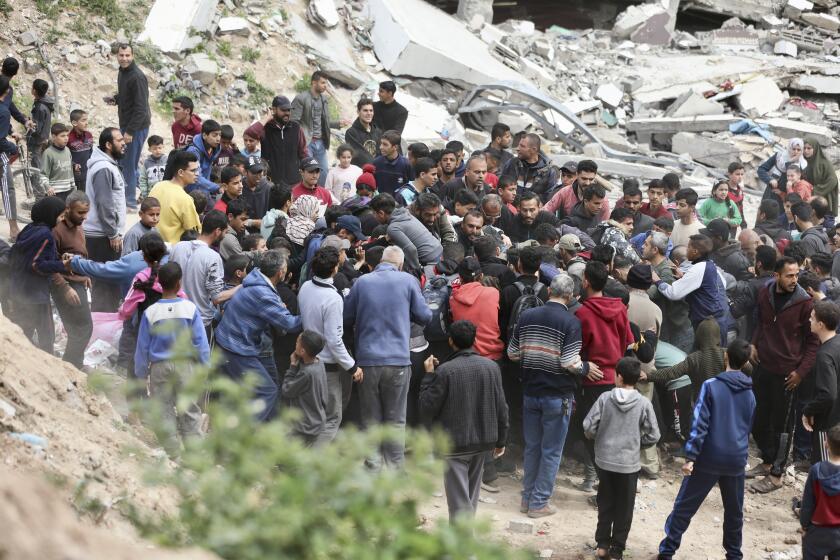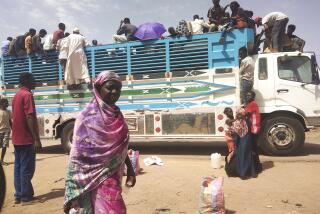U.N. report says 282 million people faced acute hunger in 2023, with the worst famine in Gaza

Nearly 282 million people in 59 countries suffered from acute hunger in 2023, with war-torn Gaza as the territory with the largest number of people facing famine, according to the Global Report on Food Crises released Wednesday.
The United Nations report said 24 million more people faced an acute lack of food than in 2022, because of the sharp deterioration in food security, especially in the Gaza Strip and Sudan. The number of nations with food crises that are monitored has also been expanded.
Máximo Torero, chief economist for the U.N.’s Food and Agriculture Organization, said 705,000 people in five countries are in Phase 5, the highest level, on a scale of hunger determined by international experts — the highest number since the global report began in 2016 and quadruple the number that year.
More than 80% of those facing imminent famine — 577,000 people — were in Gaza, he said. South Sudan, Burkina Faso, Somalia and Mali each host many thousands also facing catastrophic hunger.
A new United Nations report estimates that 19% of the food produced around the world went to waste in 2022.
According to the report’s future outlook, about 1.1 million people in Gaza, where the Israel-Hamas war is now in its seventh month, and 79,000 in South Sudan are projected to be in Phase 5 and facing famine by July.
It said conflict will also continue to drive food insecurity in Haiti, where gangs control large portions of the capital.
Additionally, while the El Niño phenomenon peaked in early 2024, “its full impact on food security — including flooding and poor rain in parts of east Africa and drought in southern Africa, especially Malawi, Zambia and Zimbabwe — are likely to manifest throughout the year.”
U.N. Secretary-General António Guterres called the report “a roll call of human failings” and said that “in a world of plenty, children are starving to death.”
The U.N. food agency says ‘famine is imminent’ in northern Gaza, where 70% of the remaining population is experiencing catastrophic hunger.
“The conflicts erupting over the last 12 months compound a dire global situation,” he wrote in the report’s foreword.
Guterres highlighted the conflict in the Gaza Strip, as the enclave has the highest number of people facing catastrophic hunger. There is also the year-old conflict in Sudan, which has created the world’s largest internal displacement crisis “with atrocious impacts on hunger and nutrition,” he added.
According to the report, more than 36 million people in 39 countries and territories are facing an acute hunger emergency, a step below the famine level in Phase 4, with more than a third in Sudan and Afghanistan. It’s an increase of a million people from 2022, the report said.
Arif Husain, the U.N. World Food Program’s chief economist, said that every year since 2016, the numbers of people acutely food insecure have gone up, and they are now more than double the numbers before the COVID-19 pandemic.
Russia has agreed to extend by two months a deal that allows Ukraine to ship grain through the Black Sea to parts of the world struggling with hunger.
Although the report looks at 59 countries, he said the target is to get data from 73 countries where there are people who are acutely food insecure.
Guterres called for an urgent response to the report’s findings that addresses the underlying causes of acute hunger and malnutrition while transforming the systems that supply food. Funding is also not keeping pace with the needs, he stressed.
“We must have the funding, and we also must have the access,” the World Food Program’s Husain said, stressing that both “go hand in hand” and are essential to tackle acute food insecurity.
The report is the flagship publication of the Food Security Information Network and is based on a collaboration of 16 partners including U.N. agencies, regional and multinational bodies, the European Union, the U.S. Agency for International Development, technical organizations and others.
Lederer writes for the Associated Press.
More to Read
Start your day right
Sign up for Essential California for news, features and recommendations from the L.A. Times and beyond in your inbox six days a week.
You may occasionally receive promotional content from the Los Angeles Times.









